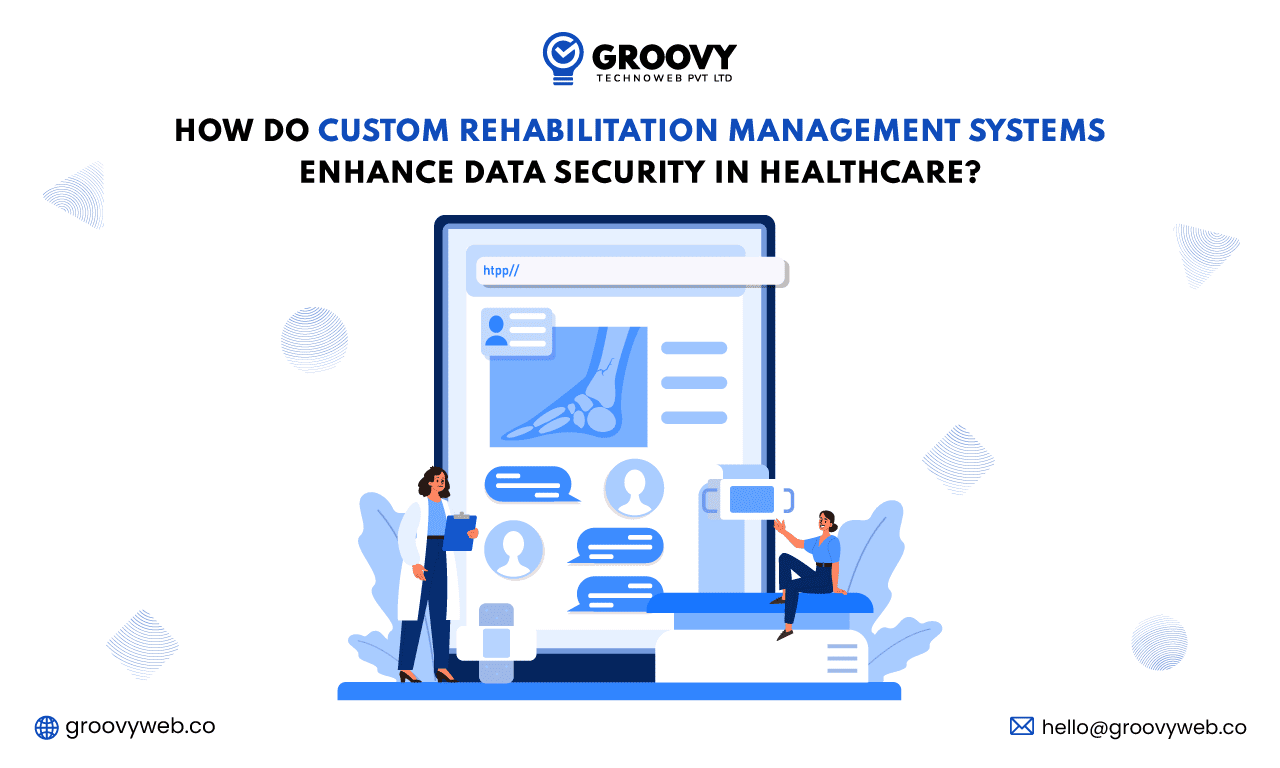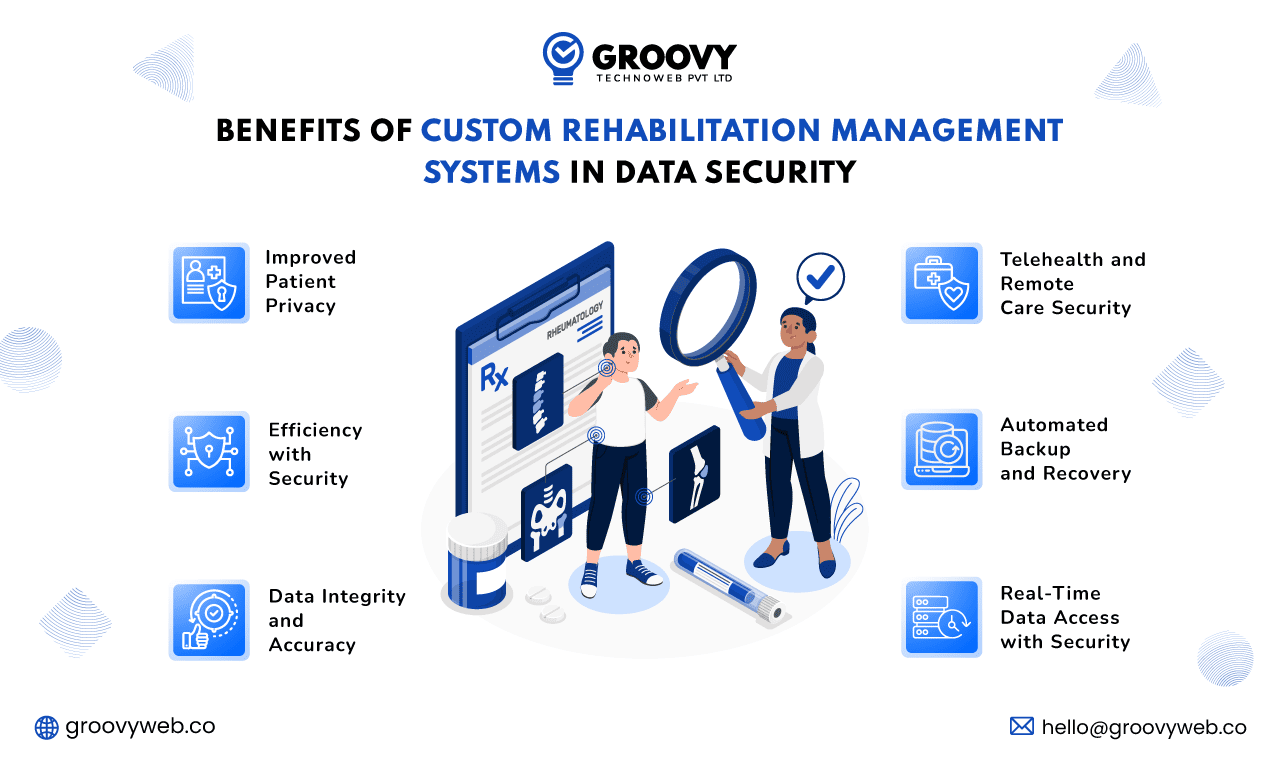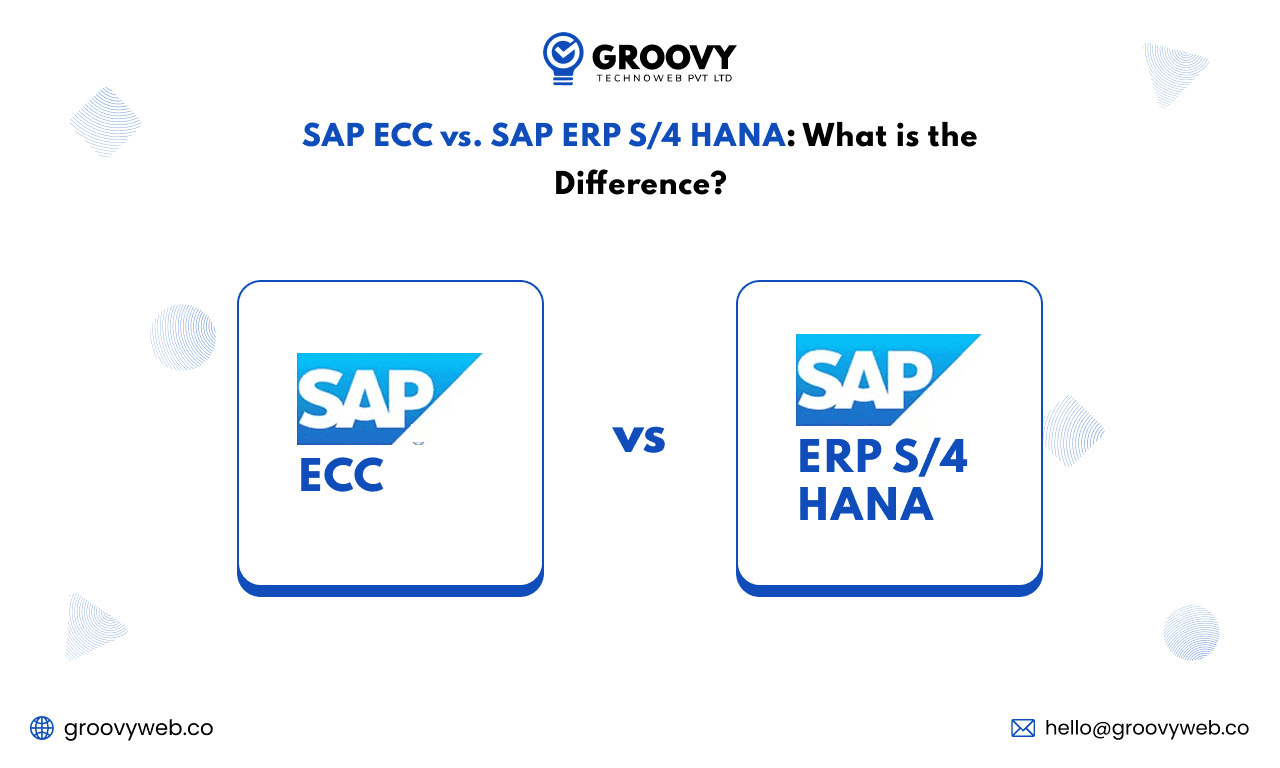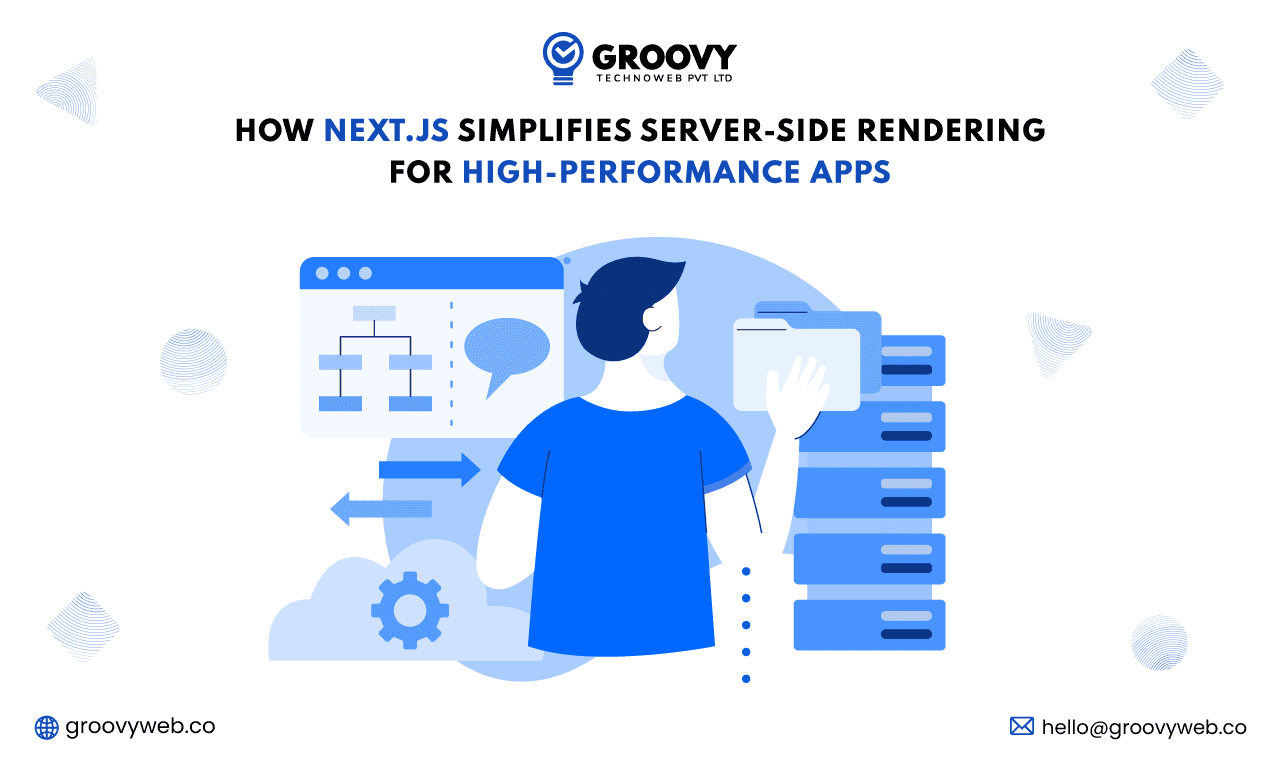How Do Custom Rehabilitation Management Systems Enhance Data Security In Healthcare?
Rahul Motwani
October 02, 2024 290 Views
Quick Summary : Custom Rehabilitation Management Systems enhance data security in healthcare by integrating advanced features like data encryption, role-based access control, and audit trails. These systems ensure the secure handling of sensitive medical information, especially in rehabilitation centers, by safeguarding patient privacy, ensuring compliance with regulations like HIPAA, and securing telemedicine interactions. By reducing cybersecurity risks, automating data backups, and offering real-time access, these systems help healthcare providers maintain data integrity and offer efficient patient care without compromising security.
In the evolving healthcare industry, statistics safety has become an integral concern, specifically with integrating digital options like Custom Rehabilitation Management Systems. These structures streamline affected person care, specifically in rehabilitation clinics. However, they additionally play an imperative function in safeguarding touchy clinical data. Below is an in-depth look at how these structures decorate records protection in healthcare, focusing on their features, challenges, and advantages while incorporating indispensable healthcare applied sciences like telemedicine and telehealth apps.
The Role of Custom Rehabilitation Management Systems in Healthcare
A rehabilitation management system is simply software that serves the needs of and deals with the administrative and clinical work of the rehabilitation center. It provides for effective treatment methodologies, financial reporting, appointments, and, most importantly, effective and safe collection and sharing of patients’ information. These systems are not just a healthcare solution because they assist in streamlining inefficiencies and enhancing measures to protect the patient’s data.
The rehabilitation facilities deal with patients; thus, most, if not all, medical records are very confidential, such as those concerned with the patient’s therapy and medical history from admission to discharge. Such data is susceptible; hence, these processes need security. The presence of data deposition, compliance with healthcare rules, the promotion of information encryption technology, and the use of the HIPAA (Health Insurance Portability and Accountability Act) policy make such policies fear-proof.
Key Security Features of Custom Rehabilitation Management Systems
1. Data Encryption
Encryption is one of the most significant features any secure system should have, especially in rehabilitation management. Encryption technology is used for static and dynamic data in such a system.
2. The Role-Based Access Control (RBAC)
Role-based access allows only a certain level of users to access and edit other patient records that are wrongful and sensitive. The given feature guarantees that healthcare professionals get the information they require for their work with minimal chances of exposing any data to unauthorized persons. For example, a physiotherapist is likely to get access to treatment records only, whereas the administrative staff can get a look at the billing details.
3. Telemedicine Integration
Telemedicine and telehealth are rapidly increasing, which means more data security challenges as patients will get treatment without physically going to where treatment is offered. Telehealth components in Custom Rehabilitation Management Systems now include security measures to prevent exposure of consultation rooms, patient information, and treatment modalities to unauthorized people. Such technologies as encryption of conversations and other safeguarded measures enhance the safety of both the target practitioner and the patient during virtual consultations.
4. Audit Trails
Audit trails are another critical feature in enhancing security. The Custom Rehabilitation Management Systems can log various actions like access, modification, or sharing of patient information in chronological order. This not only increases transparency but also helps identify any unauthorized access.
5. Compliance with Healthcare Regulations
One of the most significant advantages of Custom Rehabilitation Management Systems is the provision of regulations such as HIPAA. Such compliance ensures data handling and erection in the systems are always followed.
Any system not up to the required regulatory standards means that in case of violation of the requirements, strict sanctions will be put in place regarding that system. Such factors become significant in the thirty factors effective tools are considered.
Challenges in Healthcare Data Security
Although Custom Rehabilitation Management Systems create positive changes in the work processes of the healthcare sector, the sector continues to grapple with several issues.
1. Cybersecurity Threats
Cybercriminals involved in promoting records are mainly fascinated by healthcare information, so assaults on healthcare companies are on the rise. Cyberattacks result in data breaches, and patients’ sensitive information could be exposed. Sophisticated security features must be employed to reduce hazards, e.g., firewalls and encryptions.
2. Data Sharing in Telemedicine
Telemedicine and telehealth apps mainly entail a two-way exchange of sensitive data involving patients and service providers. Therefore, there should be methods to ensure that unapproved individuals do not access this information. This risk can be reduced by encryption, two-factor authorization, and secure messaging platforms.
3. Employee Training
At best, the finest security measures would be wasted if any security procedures were enacted that healthcare employees comply with obstruction. Regarding patient record maintenance, training personnel to secure data passwords and share data safely is essential.
Benefits of Custom Rehabilitation Management Systems in Data Security

1. Improved Patient Privacy
The design of Custom Rehabilitation Management Systems centers on safeguarding a patient’s private information using high-grade encryption and controlling access to that information. This limits the number of users accessing such sensitive medical information to only a few who have been granted permission.
2. Efficiency with Security
These systems ensure that the quality of care given to a patient is satisfactory, and such improved record management, retrieval, and presentation of patient records and treatment plans does not put any security issues at risk. Automation helps minimize manual data handling, which is often linked with mistakes and security weaknesses.
3. Data Integrity and Accuracy
In healthcare practice, it is essential that the patient information contained in the records is accurate and is not tampered with. Introducing Custom Rehabilitation Management Systems minimizes the risk of losing data, and any information in the storage system can be preserved without changes. This is essential in providing patient care in a prolonged term where historical information is used for appropriate care.
4. Telehealth and Remote Care Security
With the evolution of technology today, custom telemedicine app development has integrated itself into healthcare, thus enabling treatments even in patients’ homes. Custom Rehabilitation Management Systems augment the safety of such actions by guaranteeing that the consultation via virtual means and transfer of medical information is encoded and protected.
5. Automated Backup and Recovery
One of the benefits of Custom Rehabilitation Management Systems that is often ignored is the automatic backup feature of the data. In the case of breakdowns or cyber-attacks, this feature retrieves essential files like the patients. In healthcare, this is important as the patients’ data in lost files can hamper the effectiveness of the patients’ recoveries.
6. Real-Time Data Access with Security
There are situations whereby healthcare practitioners are required to access patients’ information in real-time, such as in rehabilitation clinics, where active treatment and progress tracking are necessary. Custom Rehabilitation Management Systems enable proper management of patients’ data even in real-time, enabling practitioners to make timely decisions.
The Impact of Data Breaches in Healthcare
Financial and Legal Consequences
A data violation in a healthcare setting can have extreme financial and lawful repercussions. Not only can it result in big penalties for non-compliance with healthcare ordinances, but it can also result in lawsuits from concerned patients. Rehabilitation centers using RMS must execute strict safety standards to bypass the expensive consequences of a breach.
Loss of Patient Trust
When liable medical data is disclosed, patients lose faith in the healthcare provider. Patient belief is important to the victory of any healthcare facility, particularly those delivering long-term rehabilitation assistance. Secured RMS ensures that patients are assured of the confidentiality of their therapy and personal documents.
The Role of HIPAA in Custom Rehabilitation Management Systems
HIPAA plays a crucial part in determining the legal framework for addressing patient data. HIPAA compliance requires healthcare providers to endure distinct actions, such as encrypting data, limiting access, and regularly auditing data management procedures. RMS must be HIPAA-compliant to ensure all patient data is kept and transferred securely.
Best Practices for Strengthening Data Security in RMS
Regular Software Updates
One of the easiest yet most adequate ways to ensure data security is by keeping the software up to date. Frequent updates patch safety susceptibilities that hackers could manipulate. Communities using RMS should execute a rigorous plan for system updates to assure continued security.
Encryption of All Communication Channels
Not only should information stored in RMS be encrypted, but so should all transmission channels. Whether data is communicated via email, telemedicine apps, or inside the clinic, end-to-end encryption guarantees that the data stays unreadable to anyone besides the intended receiver.
Implementing Strong Password Policies
Inadequate passwords are the most effortless manners for cybercriminals to access patient details. Strong password guidelines, including multi-factor authentication (MFA), can significantly lessen the chance of unauthorized access to RMS. Passwords should be complicated, modified regularly, and kept securely.
Future of Custom Rehabilitation Management Systems and Data Security
Integration with IoT Devices
The future of data safety in healthcare will certainly be shaped by the continuous improvement of technologies like RMS, telemedicine, and telehealth. As healthcare providers increasingly assume these digital solutions, protecting patient information will remain a top preference. Custom Rehabilitation Management Systems will persist in recreating a vital role in protecting liable medical data while enhancing the efficiency and quality of patient care.
In addition to present security criteria, emerging technologies like blockchain and artificial intelligence are predicted to also improve the safety of healthcare data. Blockchain, for instance, can deliver a decentralized and tamper-proof method to store and transfer medical records, while AI can support to detection of potential security hazards before they arise.
Cloud-Based Custom Rehabilitation Management Systems
Cloud computing is another area where the future of RMS lies. Cloud-based solutions offer scalability, flexibility, and cost savings, but they also introduce new challenges in terms of data security. The use of encrypted cloud storage, regular audits, and strong authentication measures will be key to maintaining security in cloud-based RMS.
Conclusion
Integrating Custom Rehabilitation Management Systems into the practice in care settings considerably increases data system security and improves patient care service delivery. Such systems dealing with data encryption, role-based access control, adherence to regulations, and safe telemedicine capabilities present a complete programmatic approach to rehabilitating contemporary healthcare centers.
As healthcare evolves with digital technologies, these systems will play an even more critical role in ensuring patient data remains secure in traditional and virtual care environments.
Written by: Rahul Motwani
Rahul Motwani is an experienced Project Manager with a demonstrated history of working in the information technology and services industry. He started his career as a Backend developer and currently has his hands-on managing projects at Groovy Web. He is a strong program and project management professional with a Bachelor's degree focused on Computer Application.
Frequently Asked Questions
We hope these clear your doubts, but if you still have any questions, then feel free to write us on hello@groovyweb.coWhat role does encryption play in data security within Custom Rehabilitation Management Systems?
Encryption transforms patient information into a coded form that can only be decrypted by official users, stopping unauthorized access. This provides that information, whether held or transferred, remains protected from cyber hazards.
How do access controls improve data security in healthcare?
Access management in Custom Rehabilitation Management Systems restricts data access to authorized users based on their roles. By restricting access to distinct data, these procedures decrease the risk of data violations and provide patient solitude.
Can Custom Rehabilitation Management Systems detect and prevent cyber threats?
Yes, many Custom Rehabilitation Management Systems have security monitoring devices that notice exceptional activities, unauthorized access attempts, or possible cyber hazards. These systems can allocate alerts or block unauthorized access in real-time, improving overall data protection.
How do Custom Rehabilitation Management Systems comply with healthcare regulations like HIPAA?
Custom Rehabilitation Management Systems are developed to meet healthcare constraints, including HIPAA, by executing strong data safety criteria such as encryption, user authentication, and audit tracks. This guarantees that healthcare providers remain obedient while protecting patient data.
Related Blog

Rahul Motwani
SAP ECC vs. SAP S/4HANA: What Is the Difference?
SaaS app development 16 Apr 2025 8 min read
Nauman Pathan
How Next.js Simplifies Server-Side Rendering for High-Performance Apps
Web App Development 09 Apr 2025 10 min read
Nauman Pathan
Why Cloud Computing Is Important for Your Business
Software Development 02 Feb 2023 17 min readSign up for the free Newsletter
For exclusive strategies not found on the blog